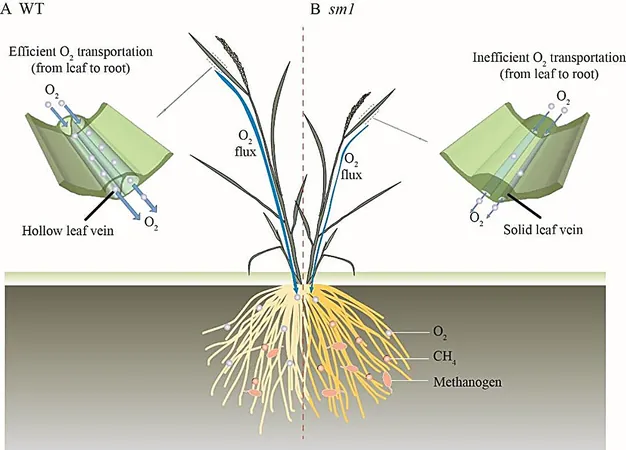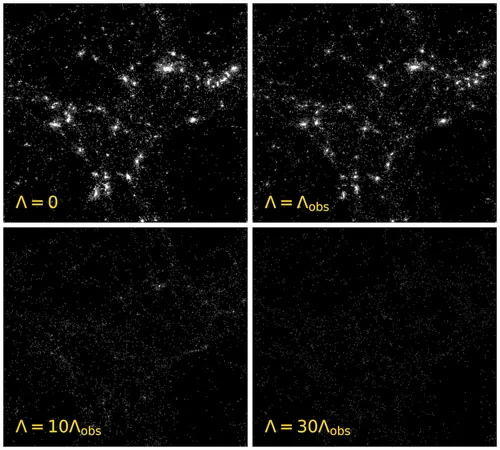
Unlocking the Secrets of Rice Growth: How a Single Gene Could Revolutionize Agriculture and Cut Methane Emissions!
2024-11-14
Author: Charlotte
Summary
In a groundbreaking discovery, researchers have unveiled the crucial role of a specific gene in the growth of rice leaf veins, which could have profound implications for agriculture and environmental sustainability.
Importance of Rice
Rice, a staple food for over half of the world's population, relies on the veins to support leaf structure and transport vital substances such as water, gases, and nutrients.
Research Team and Findings
A dedicated team, led by Dr. Wu Yuejin from the Hefei Institutes of Physical Science under the Chinese Academy of Sciences, has made significant strides in understanding the molecular mechanisms behind leaf vein development.
Their pioneering research, recently published in the journal Plant Science, focuses on the gene known as SM1.
Mutagenesis Technology
Utilizing cutting-edge ion beam mutagenesis technology, the scientists discovered a unique rice mutant characterized by solid, rather than hollow, leaf veins.
These mutant plants demonstrated reduced height and a dramatic 49% decrease in dry weight compared to their normal counterparts.
Role of the SM1 Gene
This startling finding prompted the team to zero in on the SM1 gene, known for its pivotal role in the formation of rice leaf veins.
The SM1 gene encodes a protein known as a 'litter zipper,' which interacts with another protein called OSHB1. Together, they regulate the expression of OSH1—a key player in the development of stem cells within the rice plant.
Impact on Growth and Methane Emissions
This crucial interaction significantly influences the formation and efficiency of the plant’s vascular system, vital for its overall growth and productivity.
Moreover, the research highlighted alarming environmental implications. In the mutant plants with solid veins, researchers discovered a peculiar composition of various cell types that hindered the transport of oxygen to the roots.
This deficiency promoted methanogenic activity in the rhizosphere, resulting in an astonishing 96.8% surge in methane emissions.
Future Implications
This discovery not only sheds light on the intricate biological processes of rice plants but also serves as a potential game-changer in our approach to agricultural practices.
By manipulating the SM1 gene, it may be possible to enhance rice crop yields while simultaneously tackling the pressing issue of methane emissions—one of the potent greenhouse gases contributing to climate change.
As the implications of this research unfold, the agricultural community eagerly anticipates new breeding strategies that could yield more resilient rice varieties.
Conclusion
This could lead to a future where we not only feed the world more efficiently but also do so sustainably.









 Brasil (PT)
Brasil (PT)
 Canada (EN)
Canada (EN)
 Chile (ES)
Chile (ES)
 España (ES)
España (ES)
 France (FR)
France (FR)
 Hong Kong (EN)
Hong Kong (EN)
 Italia (IT)
Italia (IT)
 日本 (JA)
日本 (JA)
 Magyarország (HU)
Magyarország (HU)
 Norge (NO)
Norge (NO)
 Polska (PL)
Polska (PL)
 Schweiz (DE)
Schweiz (DE)
 Singapore (EN)
Singapore (EN)
 Sverige (SV)
Sverige (SV)
 Suomi (FI)
Suomi (FI)
 Türkiye (TR)
Türkiye (TR)